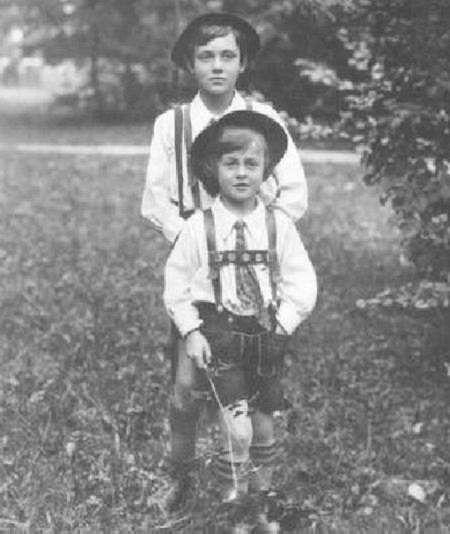
Figure 1.--Albrect and Luitpold commonly wore identical lederhosen folk costumes. Often there were differences in their clothing.


Figure 1.--Albrect and Luitpold commonly wore identical lederhosen folk costumes. Often there were differences in their clothing. |
There were also Bavarian folk cotumes. The fact that the boys were dressed in Bavarian folk costume is interesting. Folk
costumes are often a recreation of the clothing of the common people often at at about the 16th-17th century. What is often
unclear is at just what stage privlidged classes began to wear these clothes as folk costumes. The privlidged classses in the 17th
and 18th century would not wear such clothes, seeing them as the outfits of uncouth poor peasants. We are unsure as to just
when such attitudes changed. We note that Rupprecht's children wore Bavarian folk costumes at the turn of the 20th cebtury.
We are unsure if Rupprecht and his bothers in the late 19th century wore Bavarian folk costume in the late 19th century. What
was going on in Bavaria was not disimilar to devlopments in other European countries. A good example ws the Scottish kilt
which evolved from a 18th century symbol of barbaric resistance to Enhgand to a respected symbol of the British Empire.
Folk costumes are often a recreation of the clothing of the common people often at at about the 16th-17th century. The lederhosen that Prince Albrecht and his brother wore appear to have developed in Bavaria and neighboring Alpine areas of Austria.
What is often unclear is at just what stage privlidged classes began to wear these clothes as folk costumes. The privlidged classses in the 17th and 18th century would not wear such clothes, seeing them as the outfits of uncouth poor peasants. We are unsure as to just
when such attitudes changed.
We are unsure if Rupprecht and his bothers in the late 19th century wore Bavarian folk costume in the late 19th century.
The fact that the boys were dressed in Bavarian folk costume is interesting. We note that Rupprecht's children wore Bavarian folk costumes at the turn of the 20th cebtury. What was going on in Bavaria was not disimilar to devlopments in other European countries. A good example ws the Scottish kilt which evolved from a 18th century symbol of barbaric resistance to Enhgand to a respected symbol of the British Empire. We note that royalty often adopted these folk trends, perhaps to identifgy with their people. we know that this was a common oractice among royalty, because they were often extensively photographed. We are less sure about the extent to which these styles were adopted by other strata of society.
Albrecht and his brothers appear to have worn fairly standard Bavarian folk cotumes, lederhosen and halter along with Alpine-styled hats. The lederhosen are long shorts with decorative trim. They wore them with heavy light-colored kneesocks with stripes at the top.
Albrecht and his brother appear to have mostly worn lederhosen folk costumes during outings in the country.
Albrech and Luitpold commonly wore similar, but not identical outfits. Often there would be small details which differentiated their outfits, presumably recognizing the fact that Luitpold was 4 years older. We note that the lederhosen outfits they wore appear to have been identical.
Navigate the Boys' Historical Clothing Web Site royal pages:
[Main Bavarian Albrecht clothing page]
[Luitpold folk costume page]
[Main royal pages]
[Austria]
[Belgium]
[Denmark]
[France]
[German Empire]
[Italy]
[Luxenburg]
[Monaco]
[Netherlands]
[Norway]
[Romania]
[Russia]
[Spain]
[United Kingdom]
